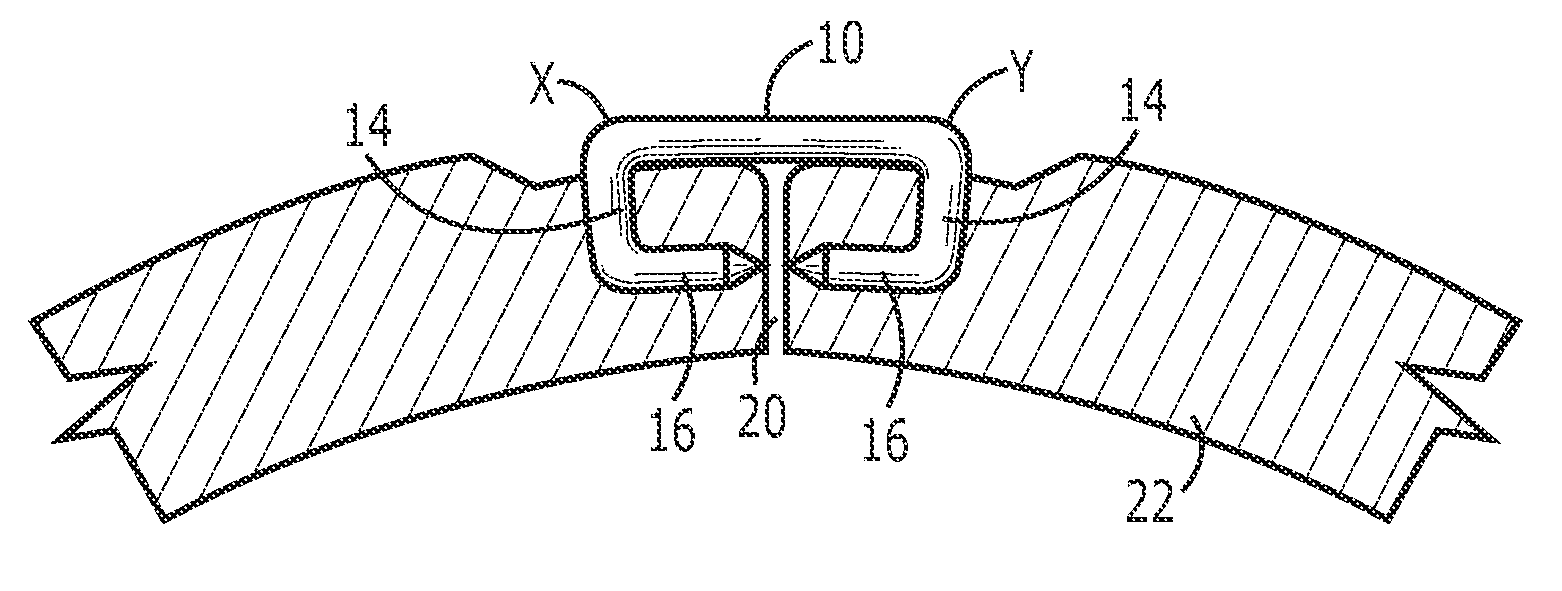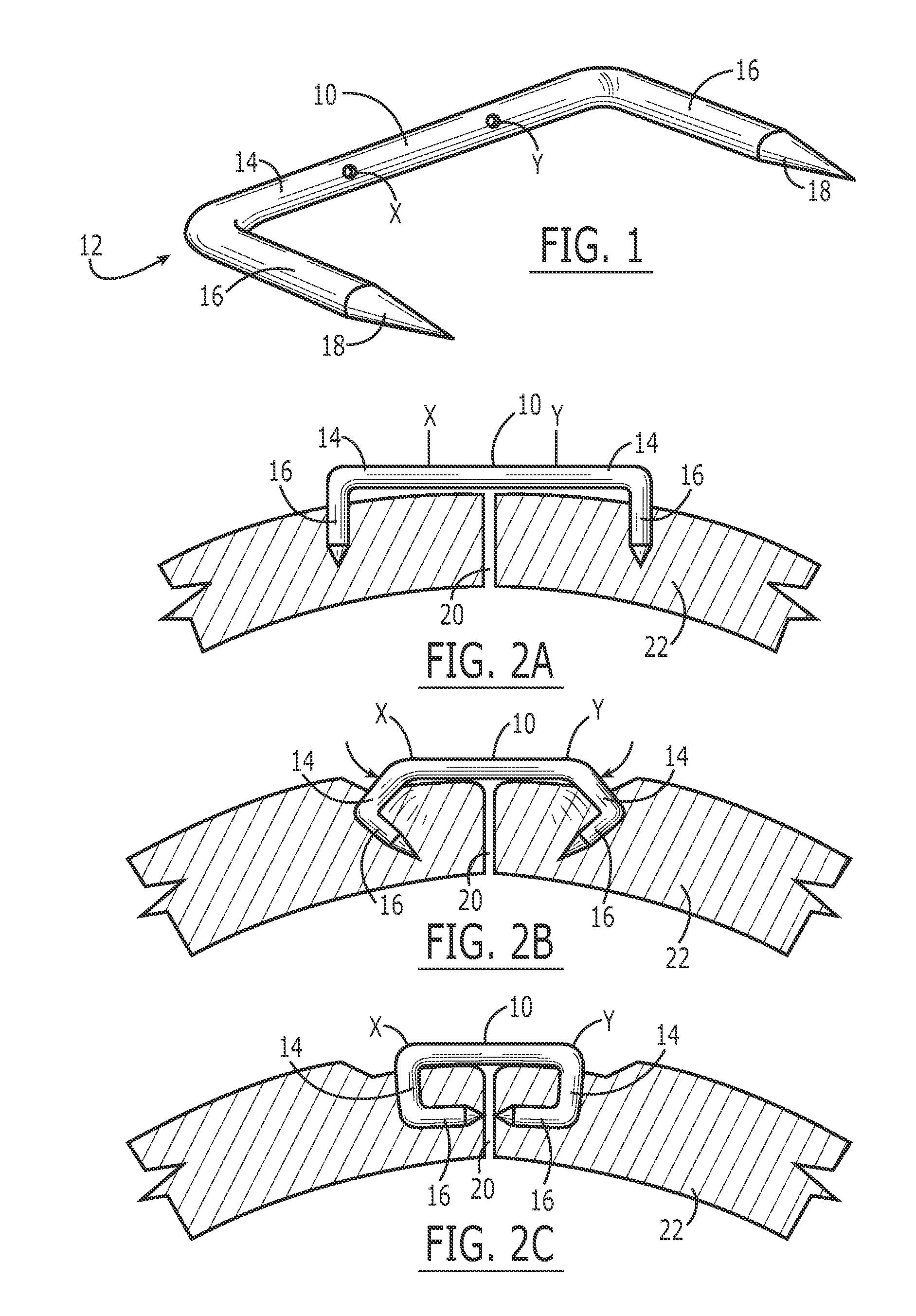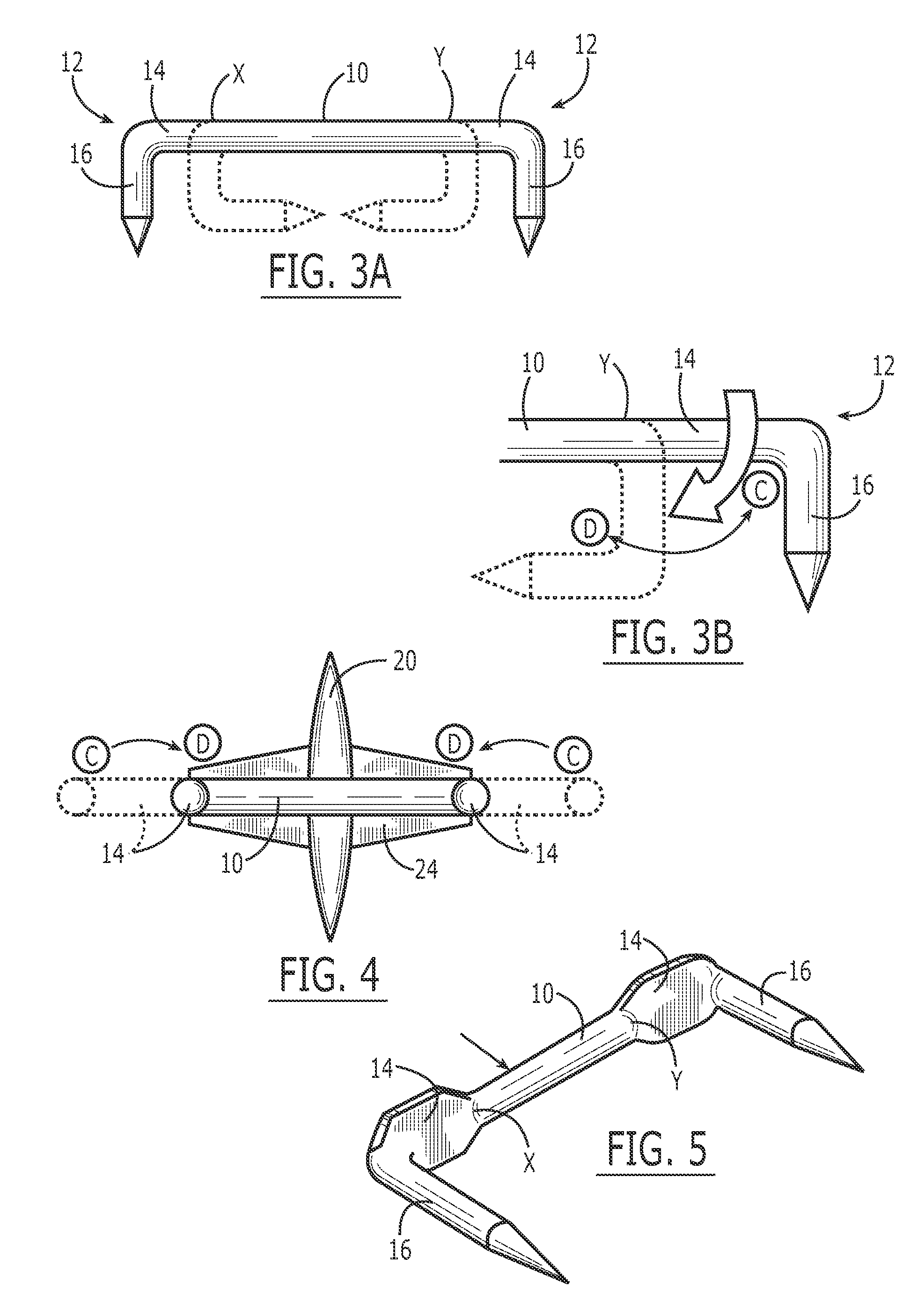Surgical Staple
a staple and surgical technology, applied in the field of surgical staples, can solve the problems of ineffectiveness, unnecessary damage to the vessel wall, and decrease the compression level between the staple legs, and achieve the effects of increasing the contact area, and increasing the area of compression
- Summary
- Abstract
- Description
- Claims
- Application Information
AI Technical Summary
Benefits of technology
Problems solved by technology
Method used
Image
Examples
Embodiment Construction
[0027] Referring first to FIG. 1, a conventional round wire surgical staple is of a generally ‘U’-shaped configuration, consisting of a base 10 and a pair of “L”-shaped legs 12 each having a proximal portion 14 forming a linear extension of the base before use (as shown in FIG. 1) and a distal portion 16 projecting substantially perpendicularly from the proximal portion.
[0028] The free ends 18 of the staple legs are generally sharpened so as to ensure easy tissue penetration. In addition to penetrating the tissue the staple is also formed in use, to bring the free ends of the legs together and thereby hold closed a wound. By forming the staple, the staple is transformed from a generally “U”-shaped configuration to a generally rectangular shaped configuration during the delivery process. This occurs by bending the legs 12 through 90° relative to the base 10 of the staple at the point where the proximal portions of the legs meet the base (known as the bend points and denoted as point...
PUM
 Login to View More
Login to View More Abstract
Description
Claims
Application Information
 Login to View More
Login to View More - R&D
- Intellectual Property
- Life Sciences
- Materials
- Tech Scout
- Unparalleled Data Quality
- Higher Quality Content
- 60% Fewer Hallucinations
Browse by: Latest US Patents, China's latest patents, Technical Efficacy Thesaurus, Application Domain, Technology Topic, Popular Technical Reports.
© 2025 PatSnap. All rights reserved.Legal|Privacy policy|Modern Slavery Act Transparency Statement|Sitemap|About US| Contact US: help@patsnap.com



